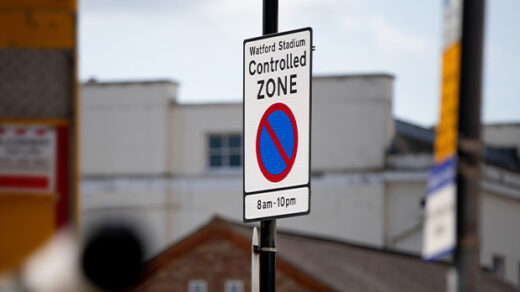Self-driving cars are currently being developed by automakers, tech firms, and others (including Uber) and are being tested on public roads all over the United States.
Unaided by a driver, a self-driving car can sense its surroundings and find its way around a route. This vehicle’s ability to succeed depends on its knowledge of the route and its surroundings.
To learn more about this innovation, let’s familiarize ourselves with some little-known facts about self-driving cars. The complexity and potential effects of these vehicles are illuminated by these facts. Let’s start!
Also Read: Remote Parking Assist
Table of Contents
Important Statistics On Self-Driving Cars
- The first autonomous car concept was introduced at New York World’s Fair in 1939
- Every year, the autonomous vehicles industry increases by 16% globally
- Waymo has 600 driverless cars
- Around 9.1 driverless car crashes occur per million miles driven
- Over a 20-month period, Waymo’s self-driving cars have been involved in 18 accidents
- In the past four years, eleven Tesla self-driving vehicle accidents have been reported
- Overall, there have been around 37 Uber test vehicle crashes
- 55% of small business owners think that in 20 years, their fleets will be fully autonomous

Facts To Know About Self-Driving Cars
The First Step is in 1925
The road to autonomous vehicles was paved more than a century ago. Francis Houdina, a former engineer in the U.S. army, invented the “Houdina Radio Control” by mounting a radio control system on a car and driving it with a remote. He demonstrated how to use several features, including turning, reducing speed, and honking, as he drove the car through the streets of New York. Because no one was driving it, the terrified onlookers who were crossing the street dubbed the vehicle the “phantom car.” Overall, the vehicle greatly increased public interest in and enthusiasm for driverless cars.
Features Of Self-driving Cars You should know
Although the majority of us might not have access to self-driving car technology, the distinction between a regular car and a self-driving car is becoming hazier. A lot of operators are giving their models sensors, GPS, sonar, and laser technology to help with automated functions like automatic braking, cruise control, collision avoidance, lane detection, 360-degree camera view, etc. Over 10 million vehicles with self-driving capabilities are anticipated to be on the road worldwide by 2020.
There Are Six “Levels” Of Self-driving Cars
These levels are essentially classifications that indicate how autonomous a vehicle is based on the self-driving capabilities it possesses. Level 0 means there are no autonomous driving features, which means the driver is solely in charge of operating the vehicle. Comparatively speaking, Levels 4 and 5 denote complete and nearly complete autonomy (respectively), indicating that the vehicle can be driven and controlled with little to no assistance from the driver.
It Is Not Just For Cars & Car Manufacturers
Although they are not the only ones, automotive juggernauts are setting the pace for the development of self-driving technologies. Businesses like Google, Apple, Amazon, Cisco, and Microsoft have also entered this market and are investigating how to use these technologies to create their own self-driving cars and other tools. In order to put money into making these solutions more widely accessible, they are collaborating with automotive firms, research centers, and the government. These solutions are also being used in conjunction with other mobility options like trucks, tractors, cargo equipment, and others. 2016 saw the introduction of a Finnish electric bus without a driver or any mechanical components.
Most Accidents Are Caused By Human Errors, Not Self-driving Cars
Self-driving cars were developed to eliminate mistakes made by drivers. The majority of traffic accidents are brought on by human error rather than by direct outside or environmental factors. Customers are very concerned about the safety of driverless cars because one of these vehicles, an autonomous Uber, hit a pedestrian. A human driver of a car rear-ended another self-driving car in the first recorded accident involving an autonomous vehicle. Statistics indicate that human error has been a factor in the majority of these accidents, and overall these numbers are also very small. Although more testing and research are needed before these vehicles are completely safe for use on the roads, we can say that they are generally safe.
Savings On Tax Money And Insurance
Road accident rehabilitation costs a significant amount of taxpayer money because they are paid for by the taxes we pay, which cover these crash costs. As the number of accidents in a driverless ecosystem is anticipated to be significantly lower, self-driving cars are anticipated to lower these costs. The industry anticipates that manufacturers will include insurance, repairs, and warranty costs in the purchase or lease price because they are investing billions to address safety concerns related to driverless cars. This will save customers money in another area: insurance coverage.
Active Investments By The Government
You’re wrong if you believe that investments in the development of autonomous vehicles are limited to technology companies and automakers. Trillions of dollars are being invested by governments all over the world in automated transportation systems, including self-driving cars. The majority of the funding for Carnegie Mellon’s Navlab project, which involved a self-driving car traveling from Pittsburgh to San Diego, came from the United States. federal government. In addition to these, governments are taking note of rules and bottlenecks that, if effectively resolved, would benefit this industry.
Driverless Technology May Transcend Into Mars Rover Technology
NASA technology used for Mars rovers will be incorporated into driverless technology by Nisan MotoCorp. to help manage their fleet of driverless vehicles. The Visual Environment for Remote Virtual Exploration (VERVE) system, used by NASA, involved human route mapping around obstacles. The same idea underlies Nissan’s Seamless Autonomous Mobility (SAM) system, which allows a self-driving car to call for assistance if it becomes stuck.
Customers’ reactions to self-driving cars range from admiration to skepticism, but we are aware that this technology will only advance and will not go away. technology is made possible by the combined efforts of automakers. This system can eventually be refined and made available to the general public, firms, and the government.
The Biggest Hurdle To Self-driving Cars Is Clear, Consistent Regulations
Across the United States, state and federal regulators have yet to establish any laws regarding what agency monitors driverless cars, how these vehicles should be regulated, and who is liable for accidents involving these cars. Additionally, there are no laws governing the data collection and privacy concerns related to these vehicles. Many people are pleading with officials to address these problems as soon as possible because there are still many unanswered questions.
What Are Driverless Car Accident Statistics?
Being Hit From Behind Causes The Majority Of Accidents Involving Autonomous Vehicles.
Since a driver frequently rear-ends another vehicle because they weren’t paying enough attention to the road, this may work in favor of self-driving cars.
According to statistics on self-driving car crashes, the majority of incidents in which a human driver and an autonomously driven vehicle collided were common crashes.
The Second Most Frequent Accident Involving An Autonomous Vehicle, According To A Report, Is A Sideswipe.
Rear-end represented 62%, while sideswipe — 21% of the Again, AV crashes frequently result from human drivers of other vehicles making mistakes when overtaking the self-driving car safely.
Per Million Miles Driven, There Are 9.1 Crashes Involving Driverless Vehicles.
The self-driving car accident rate is higher than the one of human-driven vehicles. This means that there are 4.1 crashes for every million miles driven by regular vehicles.
Even though the intention behind these vehicles is to reduce the number of collisions they cause, they still have a long way to go before their accident rate is significantly lower than that of standard vehicles.
Self-driving cars do, however, cause fewer serious injuries when compared to other types of accidents.
What Are Self-driving Cars Safety Statistics?
Two In Ten American Respondents Think Self-driving Cars Will Never Be Safe.
75% of respondents to the same poll believe that the technology behind autonomous vehicles is not yet ready for widespread use. Additionally, almost five out of ten respondents said they wouldn’t take a taxi or share a ride in a self-driving car.
However, about 34% of respondents think that these cars’ benefits will outweigh their drawbacks.
Only 12% Of Respondents In The US Say They Feel Secure In Self-driving Cars.
Furthermore, 28% of those polled are unsure of their feelings toward technology. So, if you’re wondering why self-driving cars are unsafe, we can list a few of them.
One of the causes is the delusion of security caused by the fact that drivers behave as though they are passengers in these so-called self-driving vehicles. However, as we’ve already mentioned, they aren’t yet fully autonomous.
The risk of fire is another factor. Due to their high combustibility, many people do not think lithium-ion car batteries are the best.
Cybersecurity threats are also a concern, which deters people from using these vehicles. These are just a few of the reasons why people think these cars are not safe.
55% Of Small Business Owners Believe Their Fleets Will Be Fully Autonomous In 20 Years.
Furthermore, according to statistics on self-driving cars, 38% of people think it will happen within ten years. Business efficiency is the primary driver for fleet upgrades for about 35% of small businesses that use smarter technology.
Traffic Jams Will Worsen With More Self-driving Cars.
This was the conclusion of a study carried out by the University of Western Australia. If more people use self-driving cars, the vehicles can be sent on a city-wide tour until the passengers instruct them to return to their starting point. There will be more traffic as a result of this.
Safety Challenges That Self-driving Cars Face
While these potential advantages are intriguing, autonomous vehicles still have to overcome obstacles that endanger their own safety, such as:
Traffic
In areas with heavy traffic, autonomous vehicles may still have difficulties. Driverless vehicles may struggle to keep a safe distance in bumper-to-bumper traffic because they are more likely to be involved in rear-end collisions.
Lidar And Radar Sensor Limitations
The cost of lidar makes it challenging to strike a balance between range and resolution. It is unclear how different driverless vehicles would interact with one another on a road or whether their lidar signals would clash.
Weather Conditions
No fully autonomous vehicle has yet been tested in all types of weather to see how it would respond in various scenarios. Since some of the technology depends on the vehicle being able to recognize lane markings, it is unknown how events like an oil spill or a lot of snow that could obscure those markings might affect these vehicles.
Traffic Laws And Regulations
Regulating autonomous vehicles may be challenging because every state has different traffic laws. Governments will have to choose whether to give these vehicles a special lane or access to carpool lanes. Some states want to charge these vehicles a fee for every mile they travel. Additional regulations may specify the kinds of pollutants that these vehicles are permitted to use or whether a panic button needs to be installed in them. For businesses, having their vehicles in multiple markets might be challenging and expensive.
FAQs
What percentage of vehicles will be self-driving by 2020?
Every year, there are more and more autonomous vehicles with at least level one autonomy. According to predictions, this trend will persist in the future. The number of autonomous vehicles worldwide in 2020 is estimated to be 35.02 million.
Additionally, that figure increased by about 3.62 million from 2019, when there were about 31.4 million driverless cars.
What is self-driving car’s level of safety?
One of the most cutting-edge applications of AI is autonomous vehicles. Across the board, car accidents result in more than 35,000 fatalities yearly. Many of these accidents are the result of human driver error, which self-driving cars can now theoretically avoid.
These vehicles are safer than standard ones in a variety of ways. They don’t, for instance, get tired or drive while texting. The mobility and independence of seniors and other people who have trouble driving may also be improved by these cars.
How much will accidents be reduced by self-driving cars?
Accidents brought on by distracted drivers will no longer occur thanks to perception or sensing errors made by driverless cars. Additionally, these vehicles won’t be operated while under the influence of alcohol or drugs, preventing incapacitation errors.
Approximately 34% of all crashes can be attributed to that overall. That still won’t stop half of the accidents, let alone all of them.



